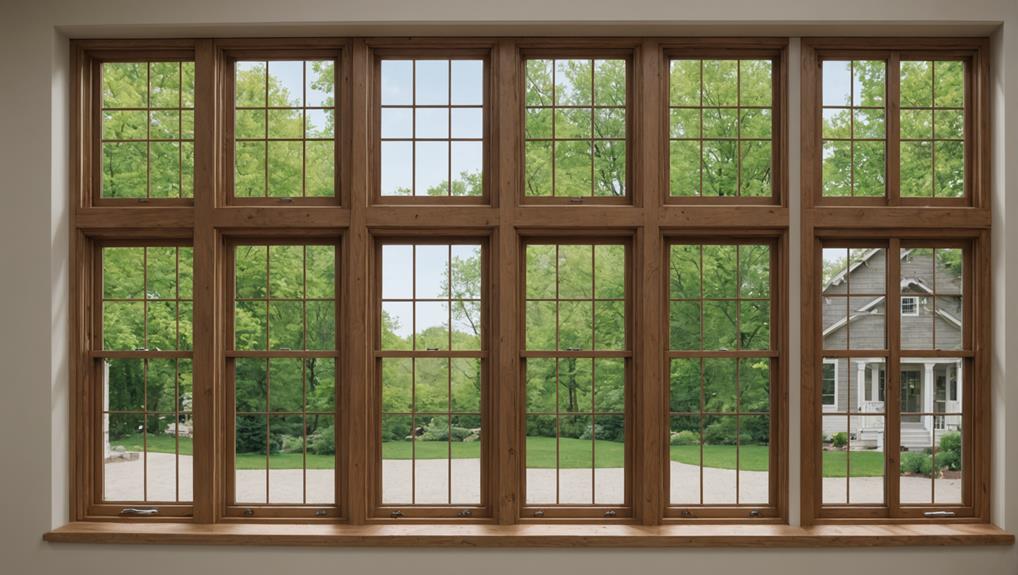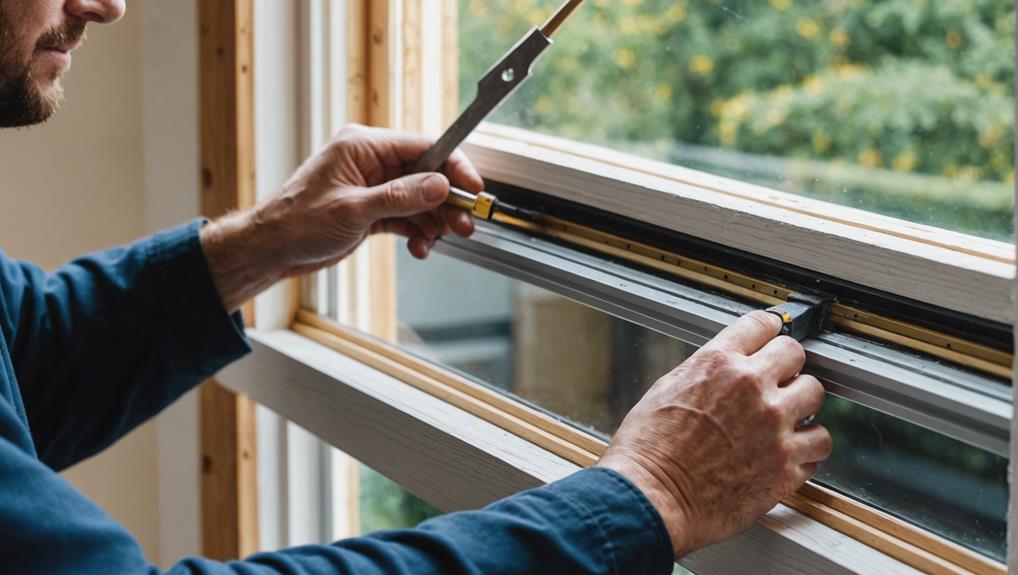When it comes to window replacement costs, several key factors affect your budget. The type of window you choose plays a significant role—double-hung and casement windows are more affordable, while bay or bow windows can be quite expensive. Materials also matter; vinyl is budget-friendly, while wood offers aesthetic appeal at a higher price. Size and customization add extra costs too, especially for custom options. Energy efficiency features, while initially more costly, can save you money long term. Finally, installation quality impacts overall expenses. If you explore these factors more, you'll gain a clearer picture of your potential costs.
Key Takeaways
- Window type significantly affects costs, with options ranging from affordable double-hung to expensive bay or bow windows.
- Material choice influences price, with vinyl being economical and wood offering aesthetic appeal at a higher cost.
- Size and customization lead to increased expenses, as standard sizes are more budget-friendly than custom designs.
- Energy efficiency features, while initially costly, can reduce long-term energy bills and offer potential incentives.
Window Type

When choosing windows for your home, the type you select can considerably impact both your budget and the overall aesthetic of your space. Different window styles, such as double-hung, casement, and slider, come with varying window replacement costs.
For instance, double-hung windows typically range from $300 to $850 each, while casement windows can cost between $300 and $1,000. If you're leaning towards larger windows like picture windows, be prepared for costs that can soar from $280 to $4,600.
The complexity of installation plays a significant role in determining overall costs, especially with intricate designs like bay or bow windows, which can set you back between $5,000 and $15,000.
Custom shapes and sizes may also lead to increased material costs and labor, as they require more craftsmanship. Additionally, energy-efficient window styles often carry a higher upfront price due to advanced materials, but they can provide long-term savings on your energy bills.
Ultimately, selecting the right window type not only affects your immediate budget but also shapes the long-term value and comfort of your home.
Materials Used
The materials you choose for your windows directly impact both your budget and the long-term performance of your home. Different window types come with varying cost structures, which can affect your overall replacement expenses.
Vinyl windows are among the more affordable materials, providing excellent energy efficiency and low maintenance. On the other hand, wood windows offer an aesthetic appeal but usually fall into higher price points, typically ranging from $2,800 to $9,000 per window.
If you're looking for durability and energy efficiency without breaking the bank, fiberglass windows might be the right choice. These typically cost between $1,500 and $5,000 per window and are known for their long-term value.
Composite windows, which combine various materials to mimic wood's appearance while ensuring low maintenance, are also popular, generally costing between $2,500 and $4,000 per window.
Keep in mind that installation costs can vary based on the materials you select, so it's crucial to evaluate both the upfront costs and the long-term benefits of each option. Choosing the right materials can lead to significant savings and enhanced energy efficiency in the long run.
Size and Customization

Choosing the right window size and customization options can greatly influence your replacement costs, as larger and uniquely designed windows often require more materials and specialized installation.
When considering the size of your window, remember that standard window sizes are typically more economical to replace than custom sizes. Custom sizes can incur additional manufacturing fees, which can add to your overall project costs.
The complexity of the design and unique shapes also play a significant role in determining costs. More intricate designs often necessitate additional craftsmanship and specialized installation techniques, raising your expenses further.
If you're looking at properties with multiple custom-sized windows, it's wise to assess all windows for potential upgrades simultaneously, as this can help mitigate compounded costs.
Energy Efficiency Features
Energy-efficient windows can drastically cut your energy bills while enhancing your home's comfort. These windows often feature double or triple-pane glass, which considerably boosts insulation compared to traditional single-pane options.
Adding Low-E (low emissivity) coatings to your windows might increase the initial investment by $50 to $150 per window, but they effectively reduce heating and cooling costs by blocking harmful UV rays and regulating indoor temperatures.
Incorporating inert gases like argon or krypton between glass panes enhances thermal performance, making your windows even more energy-efficient. While the upfront cost may seem high, the long-term savings on your energy bills can outweigh this initial investment, allowing you to enjoy a more comfortable living space without the high utility costs.
Investing in Energy Star-rated windows is another smart move, as they're designed to minimize energy consumption, contributing to both environmental benefits and your wallet. Plus, you might qualify for local incentives or rebates, helping to offset the costs even further.
Installation Quality

Proper installation plays an essential role in maximizing the benefits of your new energy-efficient windows, ensuring they function effectively and last longer.
The installation quality directly affects window performance and lifespan, so opting for professional installation is crucial. Certified installers guarantee proper fitting, minimizing issues like air leaks and water infiltration, which can compromise energy efficiency.
When considering the installation process, remember that the complexity of the installation can influence both labor costs and the overall budget.
Larger or heavier windows typically require more expertise, potentially increasing the price. However, investing in high-quality installation pays off by enhancing your windows' energy-efficient features, like low-E glass and argon gas filling.
Location and Market Conditions
Location plays an essential role in determining window replacement costs, as local market conditions can greatly influence pricing. Here are some key factors to keep in mind:
- Labor Rates: Your area's labor rates can vary. Urban locations usually have higher costs due to demand for skilled labor.
- Transportation Costs: The distance from suppliers affects transportation costs. Longer distances generally lead to higher expenses, impacting your budget.
- Regional Demand: High demand in certain regions can drive prices up. In areas with booming real estate markets, you might face increased pricing due to competition for services.
- Seasonal Trends: Keep an eye on seasonal trends. Prices typically rise during peak renovation seasons when demand for window replacements surges.
Understanding these market conditions will help you navigate pricing more effectively. By being aware of local competition and supply dynamics, you can make informed decisions.


Leave a Reply